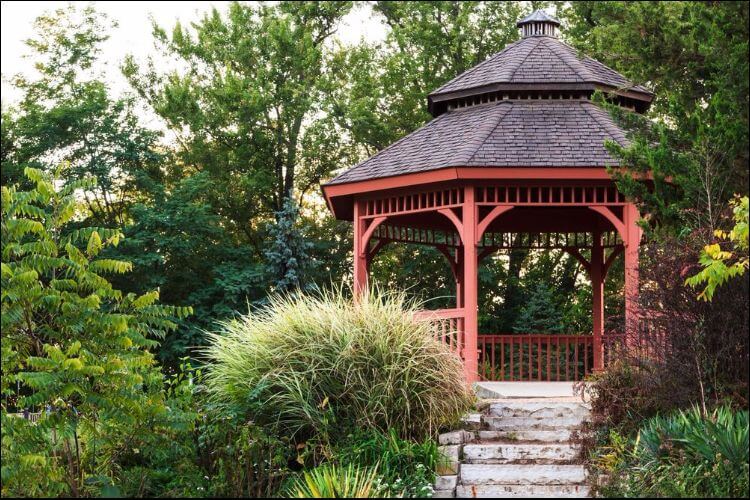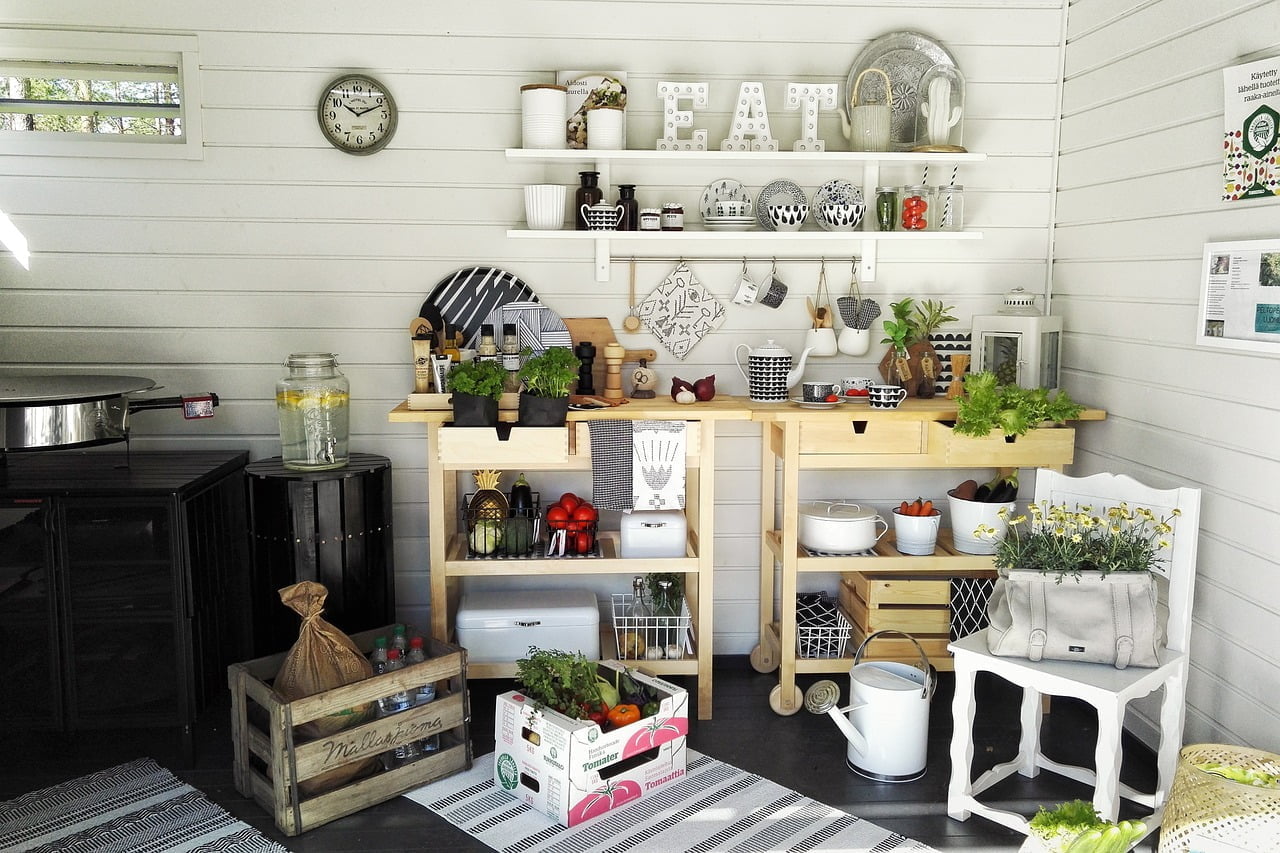Are you ready to bring the taste of the ocean to your backyard? With a clambake, you can enjoy a delicious feast of clams and seafood right at home. In this article, we will guide you through the process of hosting a clambake in your very own backyard.
To start, gather all the necessary supplies, including fresh clams, seafood, and vegetables.
Next, prepare your ingredients by cleaning and seasoning them.
Then, it’s time to build your clambake pit, ensuring it is safe and secure.
Layer the ingredients in the pit, creating a flavorful combination of flavors.
Once everything is set, it’s time to cook your clambake, ensuring that all the ingredients are cooked thoroughly.
Finally, serve and enjoy the fruits of your labor! Don’t forget to add some creative twists to your clambake to make it truly unique.
And of course, clean up and store any leftovers properly.
With these simple steps, you can create a memorable clambake experience in the comfort of your own backyard.
Quick Summary
- Gather necessary supplies and select high-quality seafood for the clambake preparation.
- Construct a safe and sturdy clambake pit away from flammable materials.
- Layer and cook the clambake ingredients in the pit, using wet burlap sacks to create steam.
- Serve the clambake in a shaded area, pair with suitable beverages, and add creative twists to the menu for an enhanced presentation.
Gather the Necessary Supplies
Now it’s time to gather all the supplies you’ll need for your backyard clambake! Safety should be your top priority, so let’s ensure you have everything you need to make a delicious and safe feast.
First, let’s talk about selecting the freshest seafood. It’s crucial to choose high-quality seafood to ensure the best taste and minimize the risk of foodborne illnesses. Head to a reputable seafood market or grocery store and look for live clams, mussels, and lobsters. Make sure they’re tightly closed and have no cracks or damage. Freshness is key!
Next, let’s discuss choosing the right seasoning for your clambake. Traditional clambakes often include a combination of Old Bay seasoning, garlic, lemon, and butter. However, feel free to get creative and experiment with different flavors. Just make sure to have enough seasoning to coat all the seafood and vegetables.
To gather these supplies, you’ll need:
- A large pot with a tight-fitting lid
- A grill or fire pit
- Tongs for handling hot seafood
- A thick pair of gloves to protect your hands
- A large bucket or container for soaking the clams
- A thermometer to ensure the seafood is cooked to a safe temperature.
Once you have all these supplies, you’ll be ready to move on to the next step in your backyard clambake adventure!
Prepare the Clams and Seafood
To add a burst of oceanic flavor to your outdoor feast, it’s time to get those clams and seafood ready. Before cooking, it’s important to properly prepare the clams to ensure they are safe to eat. Start by rinsing the clams under cold water to remove any sand or debris. Discard any clams that are open or cracked as they may be spoiled.
When it comes to cooking techniques, steaming is the most common method for clams. Fill a large pot with about an inch of water and bring it to a boil. Place the clams in a steamer basket or directly in the pot and cover with a lid. Steam for about 5-10 minutes or until the clams have opened. Discard any clams that remain closed after cooking, as they may be unsafe to eat.
If you’re looking to incorporate alternative seafood options into your clambake, there are plenty of choices. Shrimp, mussels, and even lobster tails can be added to the mix for added variety. Simply follow the same preparation and cooking techniques as you would with the clams.
Remember, safety is key when handling seafood. Always ensure that the clams and other seafood are fresh and properly cooked to avoid any foodborne illnesses. With these cooking techniques and alternative seafood options, your backyard clambake will be a hit among your guests. Enjoy the delicious flavors of the ocean in the comfort of your own home.
Build the Clambake Pit
Get ready to build your clambake pit and create the perfect setting for your outdoor feast. Safety is of utmost importance when constructing your clambake pit, so follow these clambake pit construction tips to ensure a successful and secure setup.
First, choose the right location for your clambake pit. Look for an open area in your backyard, away from any structures or flammable materials. Make sure the ground is level and free from any debris or vegetation that could catch fire.
Next, gather the necessary materials for your clambake pit. You’ll need large rocks or bricks to create the walls of the pit, as well as a metal grate or mesh to place over the top. The rocks or bricks should be stacked securely, creating a sturdy enclosure for your clambake.
Once you have your materials, start by clearing the designated area of any grass or vegetation. Dig a shallow hole and place your rocks or bricks around the perimeter, leaving enough space in the center for your fire. Make sure the walls of the pit are at least a foot high to contain the heat.
Place your metal grate or mesh on top of the rocks or bricks, making sure it’s secure and level. This will serve as the cooking surface for your clambake.
With your clambake pit constructed, you’re now ready to move on to the next step of your backyard clambake: preparing the ingredients and cooking the delicious seafood.
Layer the Ingredients in the Pit
Once you’ve built your clambake pit, it’s time to layer the ingredients for a mouthwatering seafood feast. Follow these three simple steps to properly season the clambake and select the freshest seafood for your backyard clambake:
-
Seasoning: To ensure a flavorful clambake, it’s crucial to properly season the ingredients. Start by sprinkling a generous amount of sea salt over the bottom of the pit. Then, add a layer of fresh seaweed to create a bed for the seafood. Next, sprinkle a mixture of Old Bay seasoning, garlic powder, and black pepper over the seaweed. This will infuse the seafood with a delicious blend of flavors.
-
Selecting Seafood: The key to a successful clambake lies in selecting the freshest seafood. When choosing your clams, look for ones with tightly closed shells and a briny smell. For lobster, go for ones that are alive and active. Shrimp should have a firm texture and a sweet aroma. And don’t forget to include some mussels and corn on the cob for added variety.
-
Layering: Start by layering the clams directly on top of the seaweed, followed by the lobsters, shrimp, mussels, and corn on the cob. Make sure to distribute the ingredients evenly to ensure even cooking. Finally, cover the entire pit with a layer of wet burlap sacks to create a steamy environment that will cook the seafood to perfection.
By following these tips, you’ll be able to layer your clambake ingredients properly, ensuring a delicious and safe seafood feast for all to enjoy.
Cook the Clambake
Now it’s time to savor the mouthwatering aroma as you cook your clambake to perfection. Cooking a clambake in your backyard can be a fun and delicious experience, but it’s important to follow proper cooking techniques to ensure safety.
First, make sure your fire is at the right temperature. You want a medium-high heat, so the clambake cooks evenly without burning. If you’re using a pit, keep the fire going for about two hours before you start cooking.
Next, layer your clambake ingredients in the pit, as we discussed in the previous subtopic. Once everything is in place, cover the pit with a wet burlap sack to create steam and lock in the flavors.
Now, let the clambake cook for about 1 to 1.5 hours. During this time, resist the temptation to peek or lift the cover. The steam is doing its magic, cooking the seafood, potatoes, and vegetables to perfection.
While the clambake is cooking, you can prepare some seasoning options. Classic choices include melted butter, lemon wedges, and cocktail sauce. You can also get creative with herb-infused oils or spicy marinades to add some extra flavor.
Once the cooking time is up, carefully remove the cover and let the clambake cool for a few minutes before serving. Enjoy the fruits of your labor and savor the unique flavors of a clambake cooked right in your backyard.
Serve and Enjoy!
Indulge in the delectable flavors and relish the experience of serving and enjoying a clambake cooked to perfection in the comfort of your own outdoor space. As you prepare to serve the clambake buffet, there are a few tips to keep in mind to ensure a safe and enjoyable experience for everyone.
Firstly, make sure to set up the buffet table in a shaded area, away from direct sunlight. This will help keep the food fresh and prevent any potential foodborne illnesses. Keep hot foods hot and cold foods cold by using chafing dishes and ice trays, respectively.
When it comes to pairing wines with your backyard clambake, opt for crisp and refreshing white wines such as Sauvignon Blanc or Chardonnay. These wines complement the flavors of the seafood and enhance the overall dining experience. If you prefer beer, go for a light and citrusy ale or a refreshing pilsner.
Lastly, don’t forget about the safety of your guests. Provide plenty of hand sanitizers and encourage everyone to wash their hands before serving themselves. Also, have a designated area for discarding shells and other waste to maintain cleanliness.
By following these tips for serving a clambake buffet and knowing how to pair wines with a backyard clambake, you can create a memorable dining experience that’s both delicious and safe. So go ahead, serve up those succulent clams and enjoy every bite!
Add Some Creative Twists to Your Clambake
Let’s spice up your clambake experience by adding some creative twists to the menu! Not only will these ideas impress your guests, but they’ll also elevate the flavors of your clambake to a whole new level.
When it comes to unique clambake flavor combinations, consider adding a touch of spice by tossing in some chorizo or spicy sausage along with the traditional steamed clams and lobster. The smoky and savory flavors of the sausage will add depth to the dish and leave your guests wanting more.
For creative clambake presentation ideas, think outside the box. Instead of serving the clambake in a traditional pot, try using individual mini cast iron skillets or even hollowed-out pineapple halves for a tropical twist. Arrange the clams, lobster, and other seafood on a bed of seaweed for an authentic coastal feel. Don’t forget to garnish with fresh herbs and lemon wedges for that extra touch of color and flavor.
Safety is always a priority when cooking outdoors, so make sure to handle and cook the seafood properly. Keep hot foods hot and cold foods cold to prevent any foodborne illnesses. Always follow proper handling and cooking instructions to ensure everyone’s health and enjoyment.
By incorporating these unique clambake flavor combinations and creative presentation ideas, you’ll take your backyard clambake to the next level and create an unforgettable experience for you and your guests. So get creative and enjoy the delicious flavors of a one-of-a-kind clambake!
Clean Up and Store Leftovers
Make sure to properly clean up and store any leftover food from your clambake to ensure freshness and avoid any potential food waste. Safety should always be a top priority when it comes to handling and storing food.
Here are some tips for minimizing waste during a clambake and how to repurpose leftover clambake ingredients.
Firstly, separate the cooked food from the raw ingredients to prevent cross-contamination. Store the cooked clams, corn, potatoes, and other seafood in airtight containers and refrigerate them as soon as possible. Leftover lobster meat can be used in salads or sandwiches the next day. If you have any leftover broth or stock, freeze it in ice cube trays for future use in soups or stews.
Secondly, don’t forget about the shells! Instead of throwing them away, you can use them to make a flavorful seafood stock. Simply simmer the shells with water, onions, carrots, and celery for a couple of hours, then strain the liquid and freeze it in small portions. This homemade stock will add depth and richness to your seafood dishes.
Lastly, if you have any leftover corn on the cob or potatoes, you can slice them up and use them in a delicious clambake hash. Saute the leftover vegetables with some onions and bacon, then top with a fried egg for a hearty and satisfying breakfast.
By following these tips, you can minimize waste and make the most out of your clambake leftovers. Happy cooking!
Frequently Asked Questions
Can I use frozen clams and seafood for the clambake?
Yes, you can use frozen clams and seafood for the clambake. However, make sure they are properly thawed and cooked to ensure safety. If you prefer alternatives, you can use fresh clams and other seafood options.
How long does it take to build the clambake pit?
To build a clambake pit, start by selecting a safe location in your backyard. Dig a hole about 2-3 feet deep and line it with rocks. This construction process usually takes around 2-3 hours.
Can I use a gas grill instead of building a clambake pit?
Yes, you can use a gas grill as a alternative to building a clambake pit. However, building a clambake pit has benefits such as added flavor and safety precautions for open flames.
What are some alternative ingredients I can use in the clambake?
To make a clambake more unique, try alternative cooking methods like grilling or steaming. Get creative with your recipes by adding ingredients like chorizo, corn on the cob, or even a splash of white wine. Safety first, always follow proper food handling guidelines.
How can I prevent the clambake from becoming too salty?
To prevent excess saltiness in your clambake, try using alternative seasoning options such as herbs, spices, or citrus fruits. Be cautious when adding salt and taste as you go to ensure it doesn’t become too salty.
Conclusion
So there you have it! You now know how to do a clambake in your own backyard. By gathering the necessary supplies, preparing the clams and seafood, building the clambake pit, layering the ingredients, cooking the clambake, and then serving and enjoying it, you can create a delicious and memorable meal for your family and friends.
And don’t forget to add some creative twists to make it extra special! Once you’re done, just clean up and store any leftovers for another day.
Happy clambaking!







